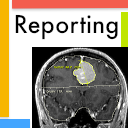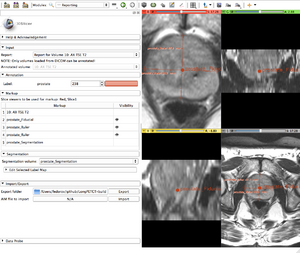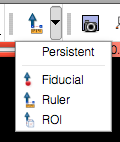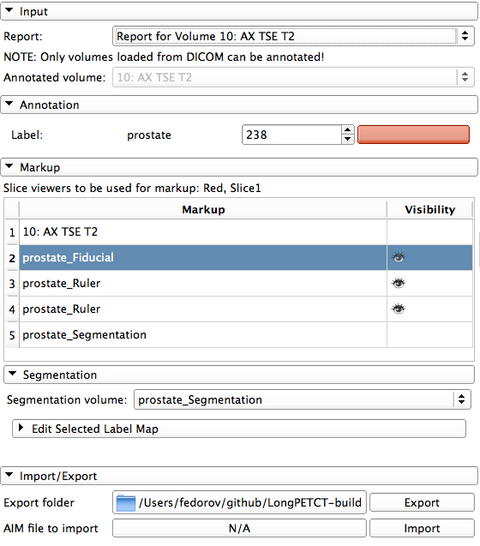Difference between revisions of "Documentation/Nightly/Extensions/QuantitativeReporting"
| Line 107: | Line 107: | ||
* ''Import/Export'' panel allow to export/import the report into AIM format. | * ''Import/Export'' panel allow to export/import the report into AIM format. | ||
| − | DICOM Segmentation objects that are imported to the user-defined location on disk are also automatically inserted into the local DICOM database. They can be loaded back into Slicer as segmentation labels independently of the report using [Documentation/{{documentation/version}}/Modules/DICOM|DICOM module]]. | + | DICOM Segmentation objects that are imported to the user-defined location on disk are also automatically inserted into the local DICOM database. They can be loaded back into Slicer as segmentation labels independently of the report using [[Documentation/{{documentation/version}}/Modules/DICOM|DICOM module]]. |
| | | | ||
Revision as of 04:07, 16 November 2012
Home < Documentation < Nightly < Extensions < QuantitativeReporting WARNING: This module is Work in Progress, which means:
|
Introduction and Acknowledgements
|
Extension: Reporting | |||||||
|
Module Description
|
The purpose of the Reporting module is to provide Slicer interface for creating image annotations/markup that are stored in a structured form, and can be exported into Annotation Image Markup (AIM) XML-based format. Currently, Reporting module allows to create three types of markup:
The 3-d segmentations are stored as binary image masks, and are serialized into DICOM Segmentation Storage objects, which in turn can be referenced from the AIM XML document. |
Release Notes
Installation: Reporting module is available as an extension that can be installed using Slicer Extension Manager. Make sure Extension Manager is enabled in the Application settings (as shown here). Follow the Extension Manager usage instructions to find and install Reporting extension. Once installed, you need to restart Slicer before you can use the Reporting module.
Potential issues related to extensions and multiple versions of Slicer: Slicer settings are stored in a dedicated system-specific location. These settings are not reset when you install a new Slicer version. If you observe unstable behavior, you could try resetting the settings as follows:
- Linux and Mac: settings are stored in your home directory in .config folder (remove ~/.config or move it to a different location)
- Windows: settings are located in C:\Users\<your_user_name>\AppData\Roaming\NA-MIC folder -- remove it or move to a different location.
WARNING: the configuration file contains the path to your DICOM database. Once the configuration file is removed, you will need to re-configure the DICOM module to point it to the location of the database!
This limitation is also described on the Limitations page.
Please note that this module is under active development, and is being made available for the purposes of beta testing and feedback evaluation! The functionality, GUI and workflows may change in the subsequent releases of the module.
Use Cases
This module is designed for the use cases that require creation and/or exchange of self-containing documents describing a certain finding in a DICOM image, such as lesions and anatomical structures.
Tutorials
Not available at this time.
Panels and their use
Before you start using the module, you need to be familiar with 3D Slicer interface and main features. Please see instruction on using the main application GUI and various tutorials to learn about 3D Slicer.
Reporting module uses internal data structure called "report" to organize the markup/annotations and associate them with the image volume being annotated.
The steps to create a new report are the following:
|
GUI of the module contains the following elements:
DICOM Segmentation objects that are imported to the user-defined location on disk are also automatically inserted into the local DICOM database. They can be loaded back into Slicer as segmentation labels independently of the report using DICOM module. |
 Segmentation can be edited using Editor module tools provided in the "Edit selected label map" panel. |
Similar Modules
References
- Quantitative Imaging Network (QIN)
- Main page summarizing the scope and development of this functionality: http://wiki.na-mic.org/Wiki/index.php?title=AIM_Annotations_integration_with_3DSlicer
- Annotation Image Markup home page
Information for Developers
- Source code of the module: https://github.com/fedorov/Reporting
| Section under construction. |







